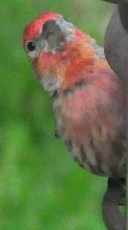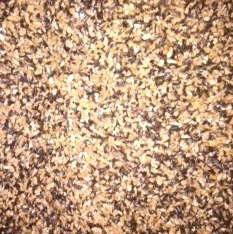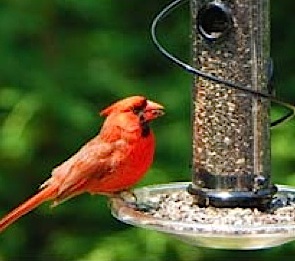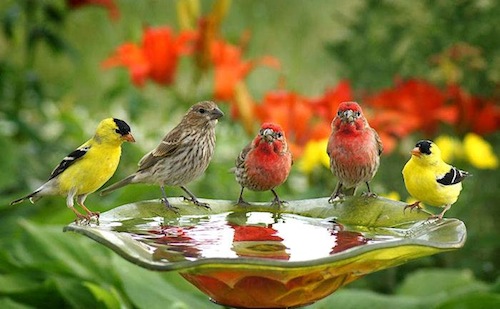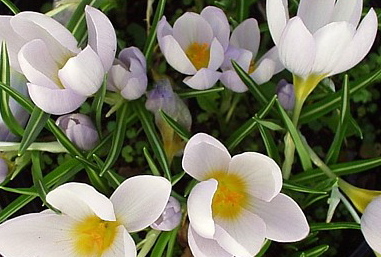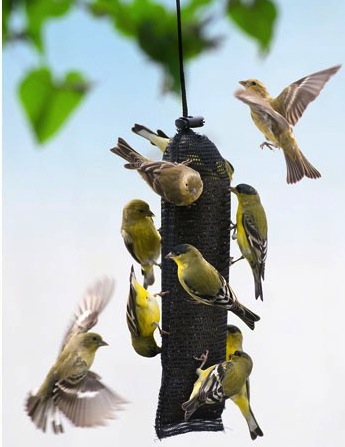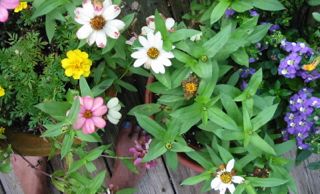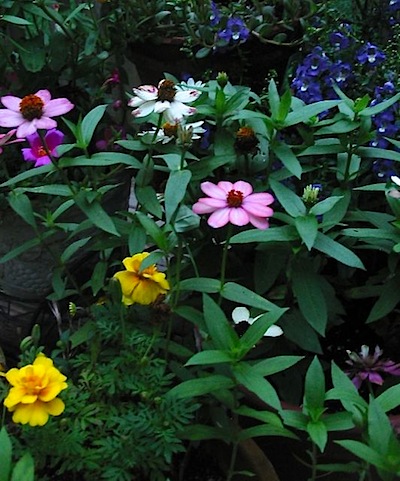-
Seeing Red at Finch Feeders
Think finch, and the first thing that usually comes to mind is a vibrant yellow American goldfinch, and because of their late breeding season, they’re out in full force this time of year. In fact, with their second molt, those bright feathers are giving way to new but drab winter plumage… so don’t think they’ve left! Finches are resident birds throughout most of the US. So keep on feeding them 🙂
The other finch is purple by name, but their plumage is really more red. You’re apt to see another red bird at finch feeders if you offer a premium seed mix.
Cardinals adore their sunflower seed, and a better quality finch mix will have more of it.
Like anything else, there’s okay, better and best, this absolutely applies to birdseed too! Best will cost more, but it offers higher nutritional value and less waste in return. One of the reasons folks quit feeding birds is the ground mess (and who it attracts), so by using a mix with no fillers-which is what ends up on the ground anyway, you’ll not only attract more of the desired birds, you’ll have considerably less mess below feeders.
Try stocking your finch feeder with a mix of premium nyjer seed and sunflower chips. It’s got a high fat content, (great for winter) and there’s no corn, no milo, no millet that’s found in less expensive birdseed. No, we don’t sell it, but yes we use it, purchased from our local WBU… but don’t tell anyone!
Although cardinals do prefer larger, secure spaces while feeding, they’ll definitely perch at finch feeder with tray, or even hop on a perch itself. The new-fangled spiral feeders offer a bit of both! Birds run the spiral instead of feeding from individual perches, and they have optional seed trays too.
So don’t forget your finches once they’ve turned brown! Keep feeders fresh and consider a heated bath to help them through winter!
-
Why Place Finch Feeders Near a Bird Bath?
Photo courtesy of Evolve Campaigns Fresh water is known to entice more feathered friends than any single feeder or birdhouse. One of the critical elements for just about any life form, birds require fresh water, even in the harshest winter weather. Sure they can eat snow, but it takes work to convert the snow into water and uses precious calories needed to stay warm. That’s why heated baths and de-icers are so popular among dedicated backyard birders-especially this past winter, no… make that this persistent winter!
With the first bulbs forcing through, it
means spring’s around the corner… even if there’s still snow on the ground in your neck of the woods! The calendar and number of hours of daylight are signaling birds it’s time for nesting, to claim a spot, settle down and raise their broods. Although American goldfinches and house finches don’t use natural cavities (or birdhouses) for nesting, you can absolutely attract these cool little fliers to your place with finch feeders and a fresh water source.
Goldfinches can be seen chowing down on straight nyjer or thistle seed (their preferred meal), as well as finch mixes containing finely chopped sunflower hearts and thistle. The latter being more likely to attract a wider variety of species. House and purple finches, cardinals, pine siskins, towhees and several types of sparrows are commonly seen visiting finch feeders.
The timid demeanor of the vibrant yellow goldfinch keeps them from competing at feeders among crowds. They’d actually prefer to just give up and fly off than to fight for a chance to eat. This not very characteristic of too many birds!
A great way to offer extra feeding space during the busy finch season (without buying several full-blown feeders) is to offer thistle socks. Convenient and inexpensive, these smaller mesh feeders provide several birds a good meal instead of a missed opportunity!
One of very few birds who molts twice per year, their electric yellow breeding plumage has started developing. When all other birds are just about through with nesting for the season, goldfinches are just getting started! Their busy season? Late June through July.
Though they might not be sporting that amazing yellow color, goldfinches are still around. Keep thistle and finch feeders out year-round for best results, to see more of these delightful feathered friends at your place!
-
don’t dead-head those finch feeders!
The only good thing about standing at the sink is catching the bird action on the deck! At present there’s five hummingbird feeders, two bird baths, and an open tray feeder… which squirrels usually hog. And flowers-gotta have plants and color to complete the scenery.
Hearing a rustling noise, and seeing movement in those flowers from the corner of my eye, it deserved a closer look. There were two goldfinches feeding and flitting amongst the zinnias. It was pretty cool and well worth a photo, so out on the deck I went with camera in hand. Well, the electric yellow birds didn’t make the shot… but my blue toes did 🙁
In fall, spent flowers like zinnia, coneflower, sunflower… and lots of others with seed heads provide a bounty of food for wild birds. They’re actually nature’s finch feeders. So next time you have the urge to dead-head those spent blooms… don’t! Leave them a while longer so they can do what nature intended… feed the birds.
I never did get close enough for the intended photo… but at least a better shot sans the fee
t!

